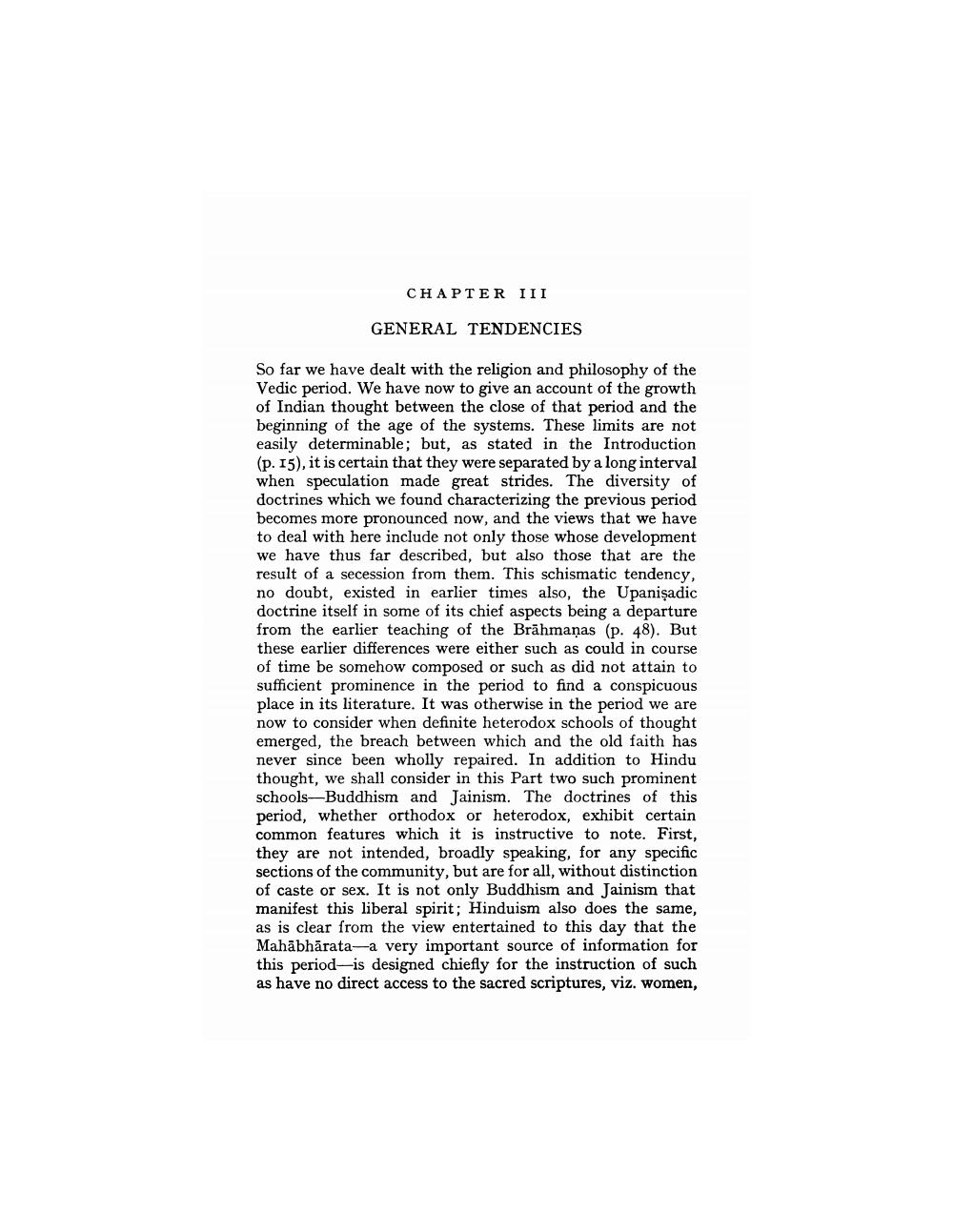________________
CHAPTER III
GENERAL TENDENCIES
So far we have dealt with the religion and philosophy of the Vedic period. We have now to give an account of the growth of Indian thought between the close of that period and the beginning of the age of the systems. These limits are not easily determinable, but, as stated in the Introduction (p. 15), it is certain that they were separated by a long interval when speculation made great strides. The diversity of doctrines which we found characterizing the previous period becomes more pronounced now, and the views that we have to deal with here include not only those whose development we have thus far described, but also those that are the result of a secession from them. This schismatic tendency, no doubt, existed in earlier times also, the Upanişadic doctrine itself in some of its chief aspects being a departure from the earlier teaching of the Brāhmaṇas (p. 48). But these earlier differences were either such as could in course of time be somehow composed or such as did not attain to sufficient prominence in the period to find a conspicuous place in its literature. It was otherwise in the period we are now to consider when definite heterodox schools of thought emerged, the breach between which and the old faith has never since been wholly repaired. In addition to Hindu thought, we shall consider in this part two such prominent schools-Buddhism and Jainism. The doctrines of this period, whether orthodox or heterodox, exhibit certain common features which it is instructive to note. First, they are not intended, broadly speaking, for any specific sections of the community, but are for all, without distinction of caste or sex. It is not only Buddhism and Jainism that manifest this liberal spirit; Hinduism also does the same, as is clear from the view entertained to this day that the Mahābhārata-a very important source of information for this periodis designed chiefly for the instruction of such as have no direct access to the sacred scriptures, viz. women,




